Sorted by date Results 326 - 350 of 383
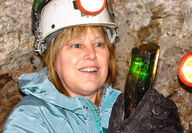
Five years ago, Maine native Mary Freeman and her husband Gary went gem-hunting for tourmaline on their property in the woods of Plumbago Mountain. Instead of the popular semiprecious stone they were seeking, they discovered what appears to be the richest known hard rock lithium deposit in the world – a formation of gigantic lithium-bearing spodumene crystals with an estimated value of $1.5 billion. The timing of their discovery, officially called Plumbago North, is fortuitous... Full story

U.S. supply chains for critical minerals in energy, automotive, aeronautic and defense markets are up against the challenge of establishing credible "green credentials" amidst sweeping company promises, increased standards and new regulations. The arbitrary nature of voluntary initiatives, combined with ill-defined industry certification, has made it difficult to compare resource provenances and prove against human rights violations and other practices damaging to the...

A mining company can never fully integrate a culture of sustainability motivated by compliance alone –satisfying laws, norms, and investors rather than taking risks and creating lasting, generational value. This message, delivered by Professor David Wheeler during the 2018 Prospectors & Developers Association of Canada Convention, continues to resonate with an industry that is now being championed as a key enabler of a clean energy future. To be seen in a better light, the m...
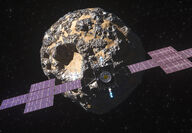
At T-minus 25 days until the launch of the Psyche, the technicians behind this first mission to a metal-rich asteroid beyond the orbit of Mars can barely contain their excitement. "It's getting increasingly real," said Henry Stone, Psyche's project manager at NASA's Jet Propulsion Laboratory in Southern California. "We are counting the days. The team is more than ready to send this spacecraft off on its journey, and it's very exciting." No stranger to playing the long game,... Full story

While lithium has been the poster child for optimism and controversy in equal measure, nickel has its own crucial role to play in the batteries powering the clean energy future – increasing range and capacity – but is traditionally carbon-heavy to produce. For nickel, the industry's focus has been twofold – obtaining enough and moving the needle between untenable quantities of emissions from mining and processing and the battery and alloying metal's necessary inclusion in ne... Full story
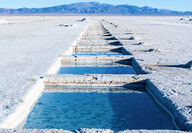
Lithium is an indispensable element in the clean energy transition for several key reasons; like all alkaline metals on the periodic table, it has one more electron than it strictly needs, and this tendency to shed electrons makes it well-suited for passing them back and forth between cathode and anode, charging and discharging thousands of times without degradation. Pure lithium does not occur in nature, but traces are found throughout nearly all igneous rocks, mineral... Full story

While most leaders in the clean energy sector strongly indicate the concept of solid-state batteries is better, a few hurdles have long held this superior rechargeable battery in the realm of pacemakers and smartwatches, and out of electric vehicles where they are desperately needed. Solid-state technology replaces the liquid electrolyte in lithium batteries with a solid ceramic or polymer material. This increases energy density, stability, and heat resistance. For EV... Full story
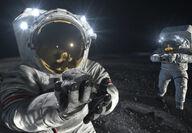
NASA has selected the geology team for the Artemis III moon flight, the first crewed lunar landing mission since the Apollo missions over 50 years ago. The astrogeology team will help plan geological investigations for the Artemis crew, which includes the first woman, first man of color, and first Canadian on a moon mission. Led by Brett Denevi of the Johns Hopkins University Applied Physics Lab in Maryland, the Artemis III geology team is working with NASA to determine the...

Deep-sea battery metals mining has created an ocean-sized rift between those that want to speed regulations, slow the process, to save the planet. Loose legislation and tight deadlines have created a deep-sea mining rift that divides governments, electronics giants, vehicle manufacturers, banks, and scientists across unexpected lines. The mining industry has found itself rapidly transforming into a vital participant in worldwide efforts to reverse climate change due to the... Full story

U.S. policymakers have become increasingly concerned about overreliance on China for the minerals and metals essential to clean energy technologies. Today China controls roughly one-third of the global market for critical minerals and rare earth elements, and several countries, including Australia, are making strides toward developing robust domestic resource extraction and processing industries of their own in response. To take advantage of recent federal tax credits for elec...
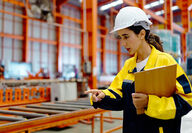
Alongside critical minerals demand, there's another shortage in the U.S. that has the mining industry just as worried – fresh faces in the labor pool. The global economy is in the midst of a mineral-intensive green energy transition that involves more electric vehicles powered by better batteries, and 2030 is the first self-imposed deadline in many countries for phasing out internal combustion engines. At the start of the new decade, more than half the current mining i...
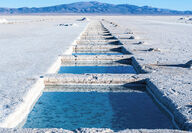
Latin American countries collectively hold over 50% of the world's identified raw lithium. These resource-rich nations have begun asserting that they will no longer accept extractive international trade relationships-hoping to leverage this natural wealth of a suddenly in-demand mineral to bolster the region's development and encourage the growth of specialized industries and clean energy infrastructure. "We don't want to sell lithium to Europe ... we want to sell lithium vehi...
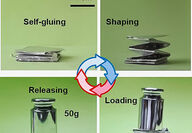
Flexible technologies are emerging, from foldable smartphones to freeform public information displays, and Chinese researchers have made a discovery that could elevate this technology to the next level. The high electrical conductivity and flexibility of liquid metals are the keys to this technology, with potential applications in wearable sensors, actuators, smart switches, printable circuitry for robotics, and technologies that not only move but stretch, such as...

Leading the lithium rush, the Pilgangoora project in Western Australia's mine-friendly and resource-rich Pilbara region is sporting one of the largest hard rock lithium deposits in the world. Nearly all the lithium produced at Pilbara Minerals' gigantic Pilgangoora processing plant is sold to China for processing into lithium carbonate and hydroxide. But Pilbara Minerals, along with a few of Australia's more daring mining companies, is working to break China's grip on lithium...

College of Science researchers at Oregon State University have demonstrated an improved carbon capture method using an inexpensive nanomaterial made from aluminum to scrub carbon dioxide from industrial emissions. Recently, at the 2021 United Nations Climate Change Conference, 197 countries agreed to the new Glasgow Climate Pact, reaffirming the 2015 Paris Agreement and the need to reduce global CO2 emissions by 45% by 2030, relative to the 2010 levels, with 140 countries...

Toyota's track record of conservative interest in an otherwise fervent competition over electric vehicle battery engineering has just turned 180 degrees with the company's shocking revelation of a solid-state battery that charges in ten minutes with a range of 745 miles. Opting to keep a tight lid on this new development until now, Toyota has produced a breakthrough as unexpected as it is contrary to the public relations leanings of most tech and automotive companies who...

Mining companies that hope to draw lithium-rich brines from Railroad Valley in the Nevada desert have come up against heated resistance from environmentalists, local ranchers and tribal leaders for years. A highly persuasive voice that joined the chorus of opponents – the U.S. National Aeronautics and Space Administration itself – has succeeded in placing a world-class lithium area off limits to mining. This wasn't exactly a bolt from the blue – NASA has been working with...

The world's leading mining companies have a big problem – with the industry being transformed by a mad rush to acquire raw materials supporting the worldwide energy transition, and mining companies' sweeping moves to drastically reduce their own carbon footprints, the future of labor is becoming more of a hybrid of specialized technical skillsets and traditional experience. Just as the average miner no longer counts a pick and shovel among his toolkit, the miner of today w...

Loan will support the building of 3 Ford-SK battery plants in Kentucky and Tennessee. In another sweeping step in support of the transportation industry's e-mobility transition and domestic infrastructure for electric vehicle and battery production, the U.S. Department of Energy has committed a loan of up to $9.2 billion to BlueOval SK LLC for the construction of three manufacturing plants to produce batteries for Ford Motor Company's future Ford and Lincoln EVs. "The DOE's...

Researchers from the U.S. Department of Energy's Critical Materials Institute, led by Ames National Laboratory, have developed a "Hot-roll Nano Neo Magnet" method for manufacturing high-performance neodymium-iron-boron permanent magnets that are heat-resistant, easier, and greener to produce. Neodymium is a rare earth metal that tarnishes rapidly when exposed to air. In 1983, it was discovered that when alloyed with iron and boron, it would create a magnetic force 10 times...

In the next five years, the recycling industry is expected to repurpose an average of 400 million tons of scrap metal annually, growing at an unprecedented rate due to the spread of industrialization and concerns over environmental sustainability. Yet, the lack of a globally accepted and standardized authentication system has hampered the accuracy of environmental, social, and governance (ESG) reporting and has made it challenging to support the value of high-quality...
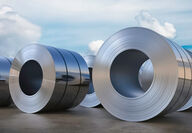
ArcelorMittal North America will supply General Motors with XCarb, a recycled and renewably produced (RRP) steel product that is taking the two industry giants a step closer to carbon neutrality. "This agreement provides another example of how we are innovating with our suppliers to reduce emissions throughout the supply chain," said Jeff Morrison, GM VP of global purchasing and supply chain. "It also highlights how strong supplier relationships can help build a better, more...
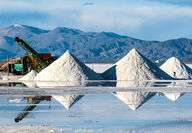
Back in 1908, when Ford Motor Company first started cranking out the Model T, the innovative automaker championed new materials, new engineering designs, and new manufacturing practices. More than a century later, automotive companies are emulating Henry Ford's strategy as they tackle the supply chain challenges of a similarly groundbreaking electric vehicle revolution. Styled these days as 'vertical integration production,' Henry Ford's idea of "a continuous, nonstop process...
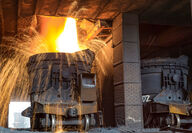
ExxonMobil's latest carbon capture and storage (CCS) agreement is with one of North America's largest steel producers, Nucor Corp. North Carolina-based Nucor produces steel products that go into industrial and domestic goods such as automobiles, appliances, and heavy equipment. Steelmaking, however, is an energy-intensive endeavor that accounts for roughly 7% of global carbon dioxide emissions. Nucor has set in motion a multi-pronged strategy to reduce the carbon footprint of...

Ford Motor Company has stepped up critical metals acquisition, forging still more relationships with the likes of battery metal miners and developers and bringing the automotive manufacturer closer to its target of producing an annual run rate of two million electric vehicles globally by the end of 2026. In May, Ford and leading U.S. lithium miner Albemarle formed a partnership for the supply of battery-grade lithium hydroxide to scale up the automaker's EV production....